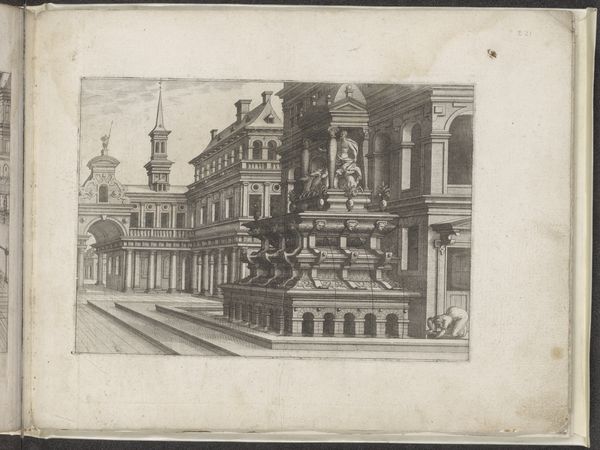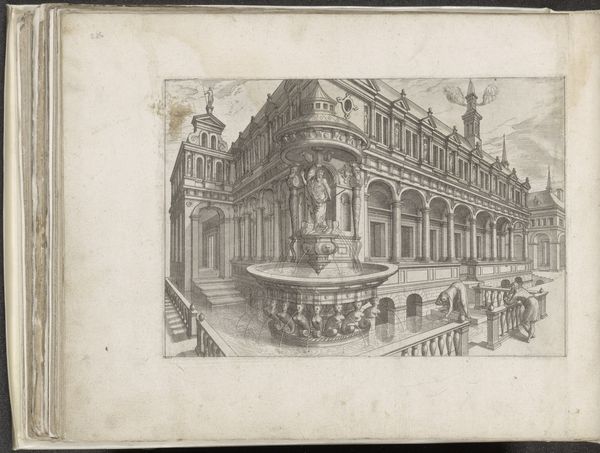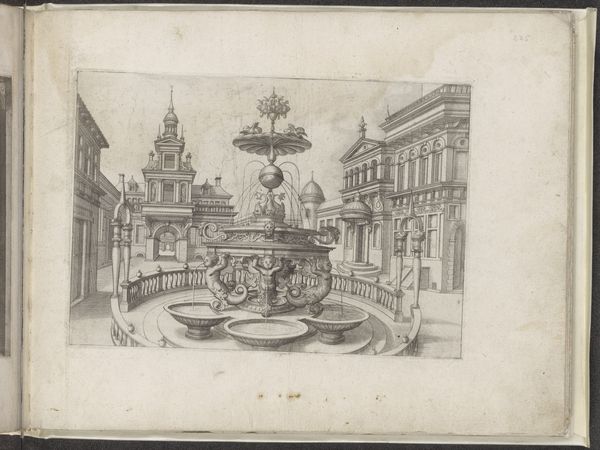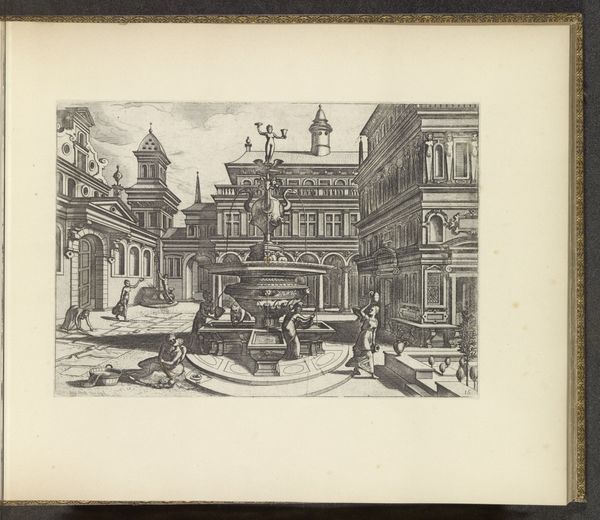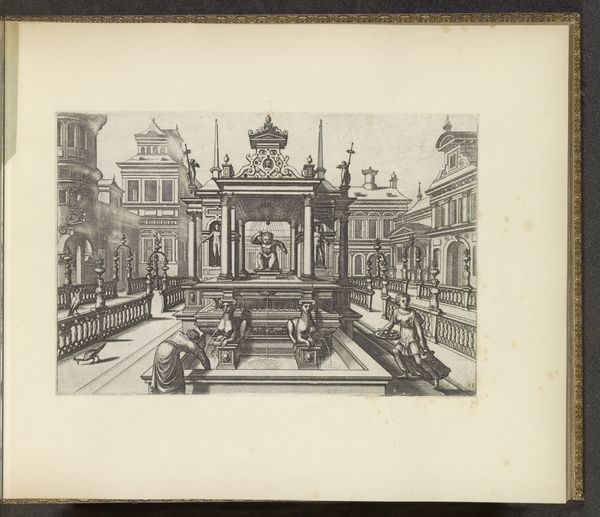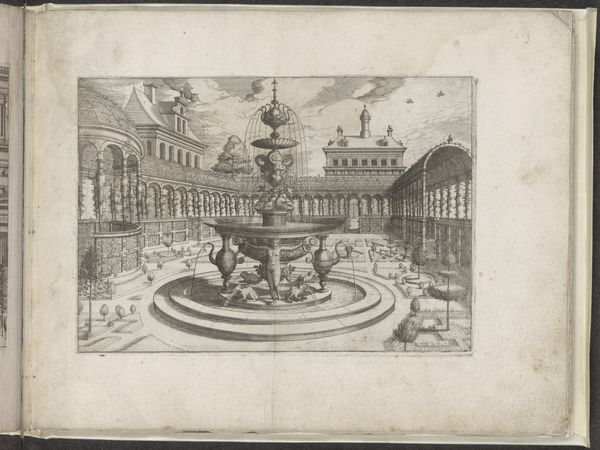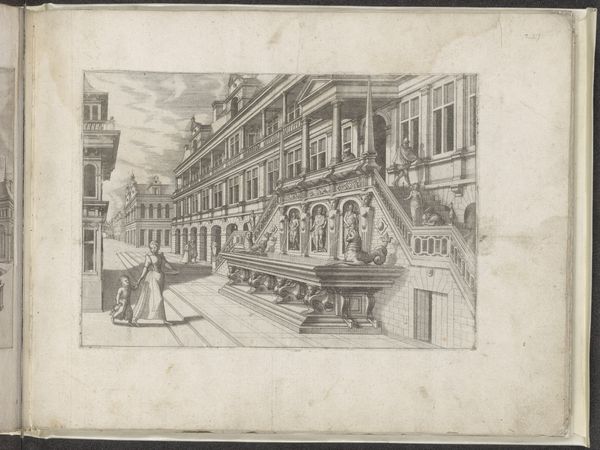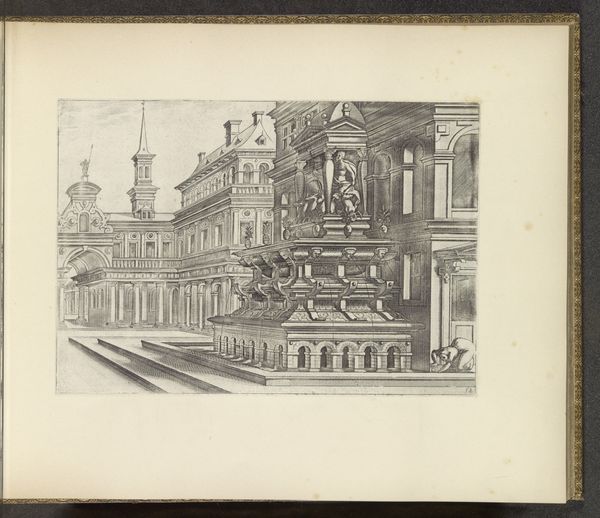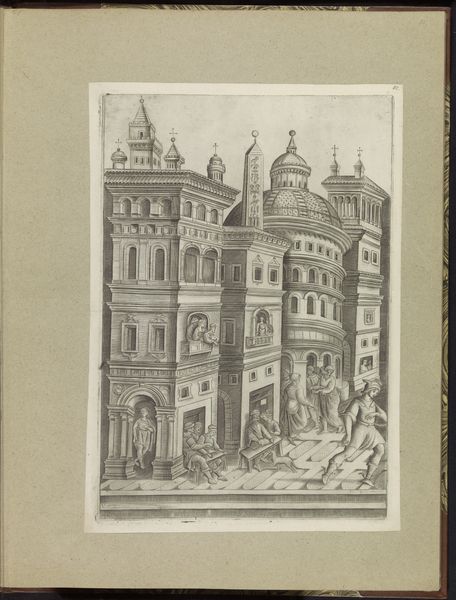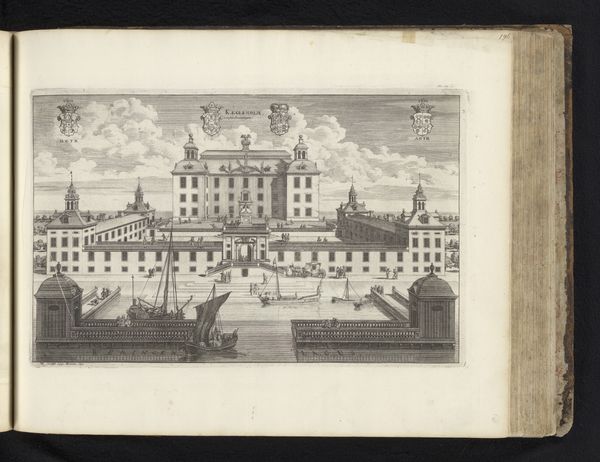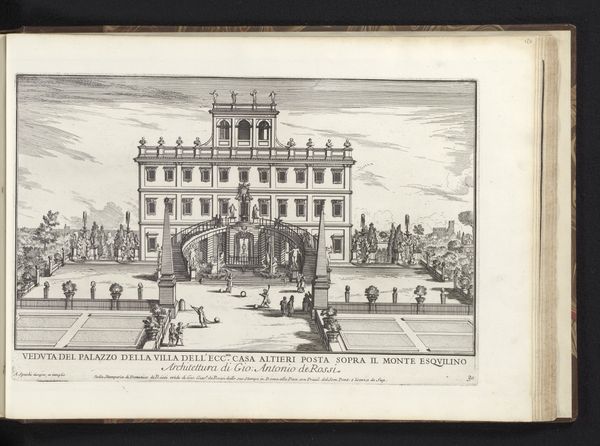
print, paper, engraving
# print
#
figuration
#
paper
#
geometric
#
cityscape
#
italian-renaissance
#
engraving
Dimensions: height 173 mm, width 248 mm
Copyright: Rijks Museum: Open Domain
Curator: Here we have a 1568 engraving by Joannes van (I) Doetechum, titled "Stadsplein met een fontein omgeven door figuren," or "City Square with a Fountain Surrounded by Figures," housed here at the Rijksmuseum. Editor: It strikes me immediately as incredibly busy but controlled. There is this elaborate fountain, rendered meticulously. You can almost hear the water. Yet, there is something static about it, all these repetitive lines forming such hard shapes. Curator: Indeed. Doetechum’s detailed rendering provides us a glimpse into the architectural aspirations of the Italian Renaissance and its diffusion through printmaking. Note the attention to perspective, typical of the period, aiming to represent an idealized urban space. Editor: Yes, this idealised public space—but what kind of labor produced it? Who designed it? Who built these stone structures and who cared for the public spaces of this early urbanity? Curator: Those are pertinent questions. The print serves as a record of the status of civic spaces but it’s not necessarily a populist statement. This was likely commissioned. These printed images allowed the elite to circulate ideas about design and urban planning among themselves. It showcases power through carefully designed landscapes. Editor: True. It seems to also be selling us on a fantasy of leisure—look at the figures, all occupied but none seeming to break a sweat. What’s interesting, though, is the relative cheapness of prints in that era. Could it be considered a form of early democratisation of art? Curator: Perhaps, but democratization doesn’t always translate to immediate shifts in societal power. What appears democratic can often serve existing hierarchies. The circulation of images was still largely controlled by certain societal and economic groups. It's about what those in power allowed to be viewed, and less about universal access. Editor: I see your point. While printmaking may have broadened access somewhat, the underlying power structures dictated whose voices and visions were amplified and whose labor remained invisible. A great example, this print; aesthetically rich, materially humble, and a fantastic lens to examine social contexts. Curator: Precisely. Examining this print allows us to understand not just artistic style but also how these styles were disseminated and for what purposes.
Comments
No comments
Be the first to comment and join the conversation on the ultimate creative platform.
